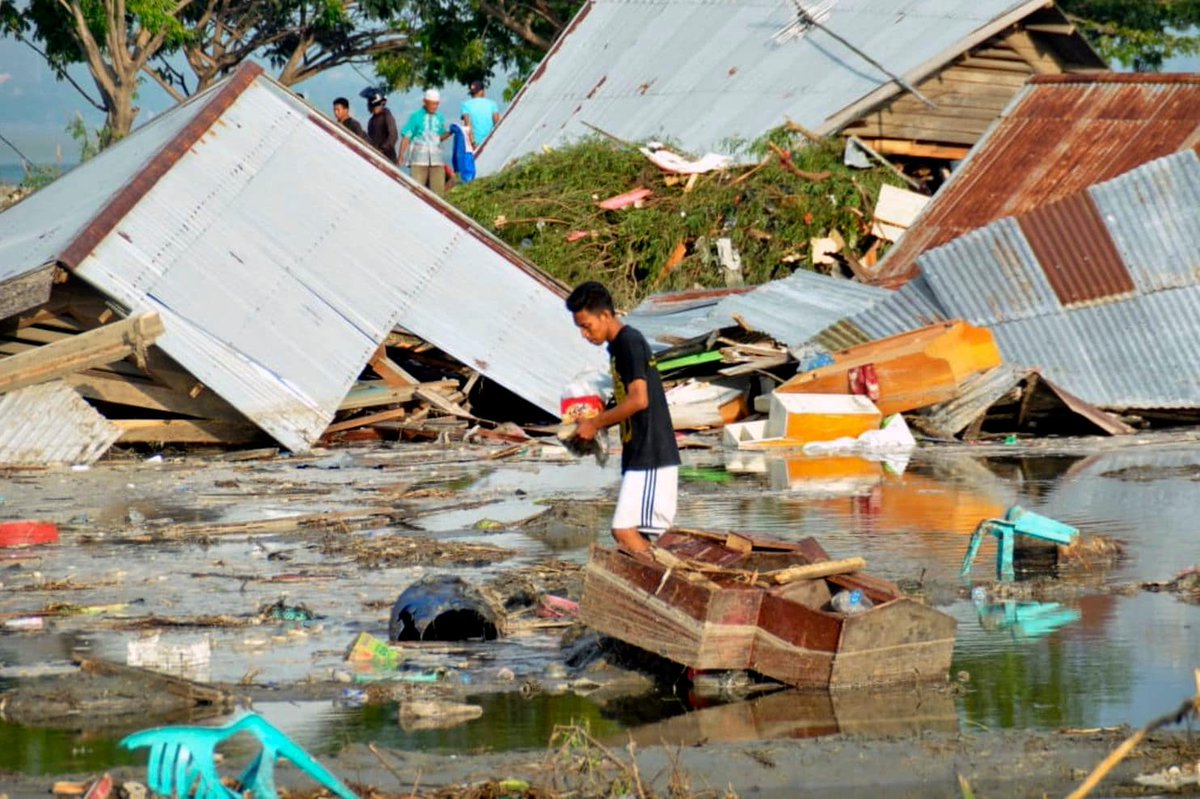Indonesia rushes aid to Sulawesi as death toll from quake, tsunami passes 830 (UPDATE 3)

- Country:
- Indonesia
Indonesian authorities scrambled on Monday to get aid and rescue equipment into quake-hit Sulawesi island and prepared to bury some of the more than 800 dead, while shaken survivors streamed out of the area in search of food and shelter.
The confirmed death toll of 832 looked certain to rise as rescuers slowly reached devastated outlying communities hit on Friday by a 7.5 magnitude earthquake and subsequent tsunami waves as high as six metres (20 feet).
Dozens of people were reported to be trapped in the rubble of several hotels and a mall in the small city of Palu, 1,500 km (930 miles) northeast of Jakarta, with hundreds more feared buried in landslides that engulfed villages.
President Joko Widodo told reporters in Jakarta getting those people out was a priority.
"The evacuation is not finished yet, there are many places where the evacuation couldn't be done because of the absence of heavy equipment, but last night equipment started to arrive in Palu," Widodo said.
"We'll send as much food supplies as possible today with Hercules planes, directly from Jakarta, there are several," he said, referring to C-130 military transport aircraft.
The national search and rescue agency said one woman was rescued overnight in the Palu neighbourhood of Balaroa, where houses were swallowed up when the earthquake caused soil liquefaction.
Most of the confirmed deaths were in Palu, a city of about 380,000 people, where authorities were preparing a mass grave to bury some of the dead as soon as they were identified.
However, nearly three days after the quake, the extent of the disaster has yet to be made clear with authorities bracing for the death toll to climb sharply - perhaps into the thousands - as connections with remote areas up and down the coast are restored.
Of particular concern is Donggala, a region of 300,000 people north of Palu and close to the epicentre of the quake, and two other districts, which have been cut off from communications since Friday.
Along with Palu, these districts have a combined population of about 1.4 million.
Five foreigners - three French, one South Korean and one Malaysian - were among the missing.
Sulawesi is one of the earthquake-prone archipelago nation's five main islands and sits astride fault lines. Numerous aftershocks have rattled the region.
FUEL AND RICE
Footage of the ruined city of Palu showed a crumpled mess of houses, cars and trees mashed together, with rooftops and roads split asunder.
Officials say rescuers need heavy equipment to shift slabs of broken concrete but access to many areas has been hampered by damaged roads, landslides and collapsed bridges.
A Reuters witness said queues at petrol stations on the approaches to Palu stretched for kilometres. Convoys carrying food, water and fuel headed towards the city while a stream of residents headed out.
The state energy company said it was airlifting in 4,000 litres of fuel, while Indonesia's logistics agency said it would send hundreds of tonnes of rice.
Finance Minister Sri Mulyani Indrawati said the government had allocated 560 billion rupiahs ($37.58 million) for disaster recovery, media reported.
Military aircraft were sent to bring people out of Palu, where crowds were waiting at the airport, military official Bambang Sudewo told Metro TV.
"All military planes are deployed to support this," he said. It was hoped up to 1,500 people could be taken out every day, with children, women and the injured the priority, he said.
Indonesia, which sits on the seismically active Pacific Ring of Fire, is all too familiar with earthquakes and tsunamis. A quake off Sumatra island in 2004 triggered a tsunami across the Indian Ocean that killed 226,000 people in 13 countries, including more than 120,000 in Indonesia.
Questions are sure to be asked why warning systems set up after that disaster appear to have failed on Friday, and why more people in coastal areas had not moved to higher ground after a big quake, even in the absence of an official warning.
Sutopo Purwo Nugroho, the spokesman for the National Disaster Mitigation Agency, told reporters on Sunday none of Indonesia's tsunami buoys, one type of instrument used to detect the waves, had been operating since 2012. He blamed a fall-off in funding.
The meteorological and geophysics agency BMKG issued a tsunami warning after the quake but lifted it 34 minutes later, drawing criticism it had been too hasty.
However, officials estimated the waves had hit while the warning was in force.
The head of Indonesia's investment board said on Twitter Widodo had agreed to accept international help and he would coordinate private sector help from around the world.
Neighbours including Australia, Thailand and China have offered help, while the European Union announced 1.5 million euros ($1.74 million) in immediate aid.
(With inputs from agencies.)
ALSO READ
"Attractive people are perceived as more trustworthy, study finds"
During elections, some people will try to engineer riots; don't fall prey to the plot: Mamata at Eid prayer in Kolkata.
Echoes of 'Phir Ek Baar Modi Sarkar' being heard across country as people have seen what stable govt can do: PM at rally in Uttarakhand.
Nine people killed as boat capsizes in Mediterranean, Italy coast guard says
"People will come and go": JJP's Dushyant Chautala on Nishan Singh's resignation










